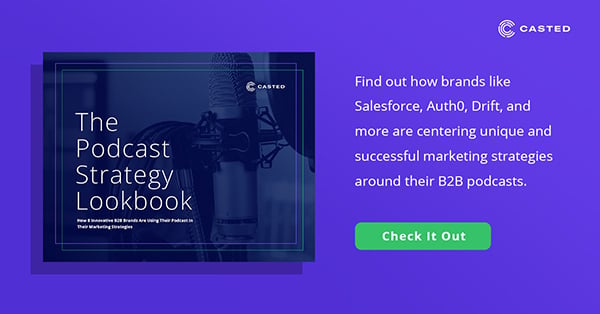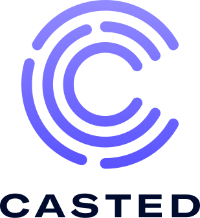When you think about retirement planning, you might start thinking about IRAs, 401(k)s, 403(b)s, and savings in general. You might also consider learning more about planning by attending seminars and working with financial advisors.
But what about podcasts? They might not be top of mind when you think about ways to learn about saving money for retirement.
Adam Blye and his team at Rubino & Liang Wealth Partners are looking to change that.
When it comes to creating a connection with your audience, podcasts should be at the top of your list. Why? Well, podcasting is a medium built for connection. Podcasts give you almost a glimpse behind-the-scenes of a brand. It’s a storytelling tool that invites people into intimate conversations or one that brings people along as a journalist uncovers a story.
But podcasting is first and foremost conversations. And the amazing thing about conversations are that they build trust. Conversations fuel connection. And Rubino & Liang are doing amazing work taking the conversations they’re having on their podcast, After the Paycheck, and building relationships with their audience through education. Their goal is to educate and connect with their audience before anything else.
So how exactly are Adam and his team using podcasting to fuel these connections? Let’s dive in and find out!
The move from radio to podcasting
Adam’s focus has been mainly in radio since joining Rubino & Liang, which is a common marketing play for this industry. But he also saw the potential in podcasting. Why restrict your audience to only the people who can tune into a radio show at 9 am on a Sunday? With podcasting, you have the opportunity to reach an audience right where they are, right in the moment that suits them.
When thinking about the audience they are trying to reach, Adam says there is a misconception that these people who are on the brink of retirement and are in their 60’s are spending time sitting around listening to radio shows. That may have been true at one point, but long gone are the days of the tech-challenged grandparent who can’t figure out a new medium like podcasting.
People approaching retirement and in the throes of planning late into their working career, likely in their late 50’s, are more tech savvy and podcast-inclined than you might think. (Ahem, my mom has mostly given up radio for Sirius XM and her favorite podcasts). So podcasting is a great way to reach this audience and serve them valuable information.
A focus on education first
The shift from radio to podcasting did have its challenges. Adam had to coach his team on understanding the medium. This isn’t a channel where you can outright sell yourself like on a radio advertisement. Instead, you need to offer something of value. When people choose to listen to your podcast, it means they are choosing it over something else. So your podcast has to be that engaging, that valuable that they are willing to listen to it over doing something else.
As Adam puts it, in podcasting, they had to go more in depth on a topic. Focus an inch wide and a mile deep, instead of the other way around, to give their audience valuable information. By focusing on education for their audience, Rubino & Liang had the opportunity to continue showing their expertise and to build trust with their audience.
The beta test
Before pushing their show out for outward promotion, they tapped into their existing audience to better understand what their audience valued and what information would be most beneficial to them.
Using their existing email database, they chose to drip the show out and then analyze the results. They focused their first episodes on how-to topics that were common questions, like how to convert an IRA to a ROTH 401(k). Once they saw that their existing audience was responding well to the content, they decided to launch the show externally.
By knowing exactly who their audience was, they were able to gauge how topics were received, what their audience liked and didn’t, and what topics deserved more attention. Focusing on their existing listeners allowed them to make a better show that would continue to serve this audience, but also be helpful to a new, untapped audience.
Connection over conversion
While the podcast started out as a test and something that took up just a small portion of Adam’s time, it turned into a much bigger opportunity to connect with their audience.
2020 has thrown everyone for a loop, but for a business that relies heavily on in-person events, Rubino & Liang had to rethink how they were connecting with their audience. Virtual meetings are great, but Zoom-fatigue is real and joining a meeting outside of your work day is becoming harder and harder to accommodate. So Adam and his team chose to lean harder into their podcast.
This was an opportunity to shift focus from how many event attendees they are converting to how many people they can offer help to right now. They wanted to let people know they were here for them, they were the experts, and they wanted to give their knowledge away for free. Adam believed that if they did this, it would build connection and trust with their audience. Even if someone wasn’t interested in working with them, they might share that content with others.
By focusing on helping people, Adam truly believes that will naturally help grow the company. And in a time like we’re in right now, it’s better to offer a helping hand and focus on what you can do to serve your audience.
In a time when we’re all craving connection, companies like Rubino & Liang are striving to build relationships with their audience first by using the conversations they are having on their podcast to educate. And, like Adam, we truly believe that the intimate conversations we have on podcasts can actually fuel connections that will eventually lead to business growth.
Listen to Adam’s full episode below.
Interested in learning more about how you can use Casted to create connections with your audience that fuel conversions? Schedule a demo today.


